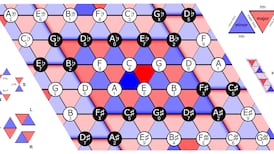Did you ever wonder how dinosaurs performed the sex act? Don't fret if you haven't figured it out yet – the matter remains a puzzle for science, although progress is being made. The question is addressed by Brian Switek in the April edition of Scientific American .
Dinosaurs, the well-known giant reptiles and the largest animals ever to walk the Earth, ruled our planet for 135 million years, and most became extinct 66 million years ago. Until recently, biologists could not tell the sex of any dinosaur from its fossilised remains. However, a breakthrough was made in 2000, when a fossil of Tyrannosaurus rex with a broken thigh bone was noticed to have a medullary bone – a layer of calcium-rich tissue inside the shaft of long hind-leg bones that is developed in some species of pregnant female birds as a store of raw materials for creating eggshells. So fossils of pregnant female dinosaurs can now be identified, but that's as far as it goes.
Paleobiologists know very little about dinosaur sexual organs because soft tissue is rarely preserved in fossils. Did male dinosaurs have a penis and female dinosaurs have a vagina? To shed light on this, biologists look at the closest living relatives of the dinosaurs: birds and crocodilians (crocodiles, alligators and caimans).
Birds are actually living dinosaurs, a special line that arose about 150 million years ago and some of which survived the extinction event. Crocodilians developed from Archosaurus about 220 million years ago when Archosaurus divided into two evolutionary lines, one leading to crocodiles and the other to dinosaurs and birds. Both birds and crocodilians have a cloaca, a single opening or slit through which they excrete, mate and lay eggs. Dinosaurs, by extension, probably had a cloaca also, which means a male’s genitals would not be visible as he walked along but rather would be hidden in the cloaca, which would be seen as a slit beneath the tail.
Most male birds do not have a penis inside their cloaca. The male bird has sex with the female by pressing his cloaca to hers in a "cloacal kiss", thereby passing semen from his to her orifice. However, some male birds, for example waterfowl, have a penis and, interestingly, their lineages all originate near the base of the bird family tree. It is concluded that all ancient birds had penises that were lost later in evolution, and almost certainly male dinosaurs had penises.
The simplest way to envisage dinosaurs having sex is the male mounting the female from the rear. But fairly obvious problems with this method immediately suggest themselves. Many dinosaurs were massive creatures, and scientists have doubted the female could bear the weight of the male even for a brief period.
For example, Argentinosaurus was the biggest sauropod. It was about 30m from head to tail and may have weighed up to 100 tons. Many biologists feel conventional mounting behaviour was not feasible for such creatures, except perhaps in water, where buoyancy would help the female to bear the weight. Buoyancy does not explain how the male would get past the female’s long, inflexible tail, however.
Largest current land animals
In order to get clues to dinosaur sexual behaviour, biologists look at how our current largest land animals – elephants, rhinoceroses and giraffes – have sex. In all cases the male mounts the female from the rear. The female bears the weight and the sex act is carried out very quickly, probably to minimise the weight-bearing and general awkwardness of the whole procedure. In the case of elephants, the process is facilitated by the fact that the elephant has a very small tail.
Other dinosaurs had body armour and formidable, sharp spikes protruding from their bodies, for example Stegosaurus and Kentrosaurus, that would have provided an apparently insurmountable challenge to a male attempting to act from the rear. In these and other cases, perhaps the females lay on their side during the act. Other species may have used different strategies, for example backing up to each other.
Or perhaps these dinosaurs had very long, flexible penises that could bridge the gap when two spiky dinosaurs got close (but not close enough for the male to be castrated on a spike). An animal the size of a five-ton, 14m-long Tyrannosaurus rex would have needed a penis at least two metres long to mate effectively. Scientists are now using computer simulations to test out various scenarios in an attempt to solve this intriguing mystery.
William Reville is an emeritus professor of biochemistry at UCC
understandingscience.ucc.ie









